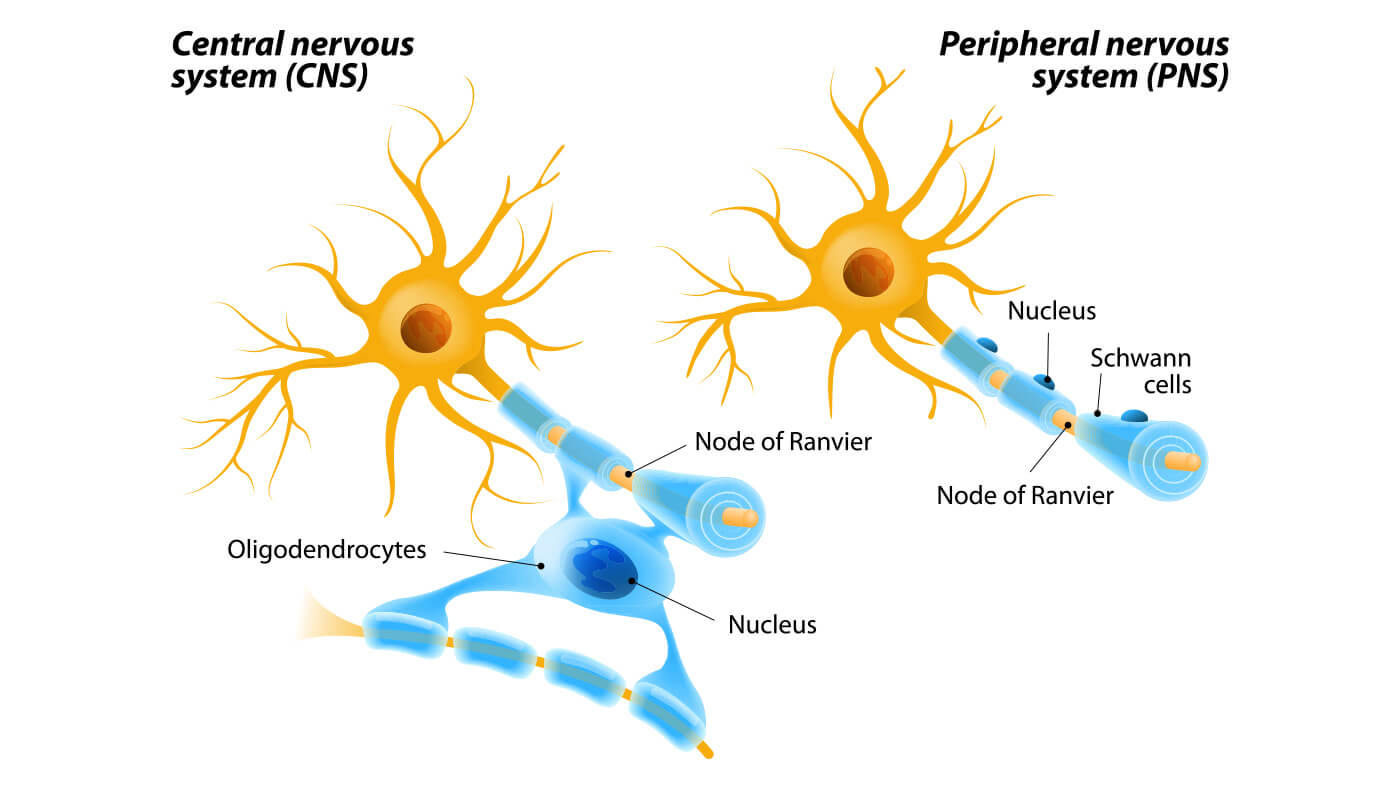
We’re In Chronic Pain & Need A Solution
Back pain is the number two reason for calling in sick at work, as well as the leading cause for claiming disability worldwide.
Between 11% and 40% of adults in the U.S. are also thought to suffer from chronic pain.
If you’ve heard about using CBD to help manage pain you’re experiencing, but are still hesitant or unsure, then keep reading, as we look at the evidence available in using CBD to treat pain.

CBD: The Evidence for Using CBD to Treat Pain
While few human clinical trials have been conducted to date, the preliminary evidence for using CBD to treat pain is overwhelming.
CBD helps manage pain by exerting influence at the site of injury, in the spinal cord, and in the brain.
For treatment purposes, pain is divided into two different categories, inflammatory pain, and neuropathic pain.
Inflammatory Pain
Inflammatory pain starts out as acute inflammation which usually lasts up to around three weeks.
Pro-inflammatory molecules called cytokines are released and these same molecules also activate pain receptors in your body to send pain signals to the brain.
Chronic inflammation sets in if the inflammation hasn’t resolved itself in that time.
Pain sensors are likely to become hyper-sensitive meaning your pain threshold is actually lowered and pain signals are sent to the brain much earlier than normal.

Neuropathic Pain
Neuropathic pain is the result of damage to peripheral nerves (outside of the spinal cord and brain). Nerve damage can occur from trauma or injury, exposure to neurotoxic substances, metabolic disorders, and autoimmune diseases.
Neuropathic pain can also lead to hyper-reactive pain signals to your brain.

CBD for Inflammatory Pain
All current research suggests that CBD is fantastic at combating inflammatory pain as well as being a novel treatment for a wide range of inflammation-related conditions. This is due to the fact that CBD is a potent anti-inflammatory.
- A 2007 research paper, published in the European Journal of Pharmacology, proved that CBD can reduce inflammatory pain in rats. The results concluded that CBD has great potential for treating chronic pain.
- Another research paper, published in 2009, demonstrated that CBD also acts on inflammation by reducing oxidative stress in the body. The antioxidant properties of CBD dramatically decreased oxidative stress and inflammation in patients following intense chemotherapy treatments.
- In 2015 a full research review was conducted on CBD and its role in treating inflammation. The review team agreed that CBD reduces inflammation through a number of different pathways in the body.
- More recently, a 2017 research paper showed that CBD also binds to TRPV1 receptors in the body. TRPV1 receptors are involved in the mediation of pain and sensory perception, body temperature, and inflammation. When CBD binds itself to these receptors, it is able to massively desensitize them.

CBD for Neuropathic Pain
Neuropathic pain is often more difficult to treat. It’s understandable why many people are keen to find a safer alternative to opiate-based prescription medications such as morphine and oxycontin.
When it comes to using CBD to treat neuropathic pain, the evidence is again highly persuasive.
- A research paper published in 2010 found that CBD inhibited the activity of microglia cells in the spinal cord and brain. These microglia cells are known to amass in neuropathic pain syndromes. Therefore CBD may prevent neuropathic pain response from escalating.
- Another study from 2012 proved that, by interacting with glycine receptors, CBD is also able to decrease pain signals that are sent from around your body, through your spine, and into your brain (where your pain is perceived).
CBD, as well as other glycinergic cannabinoids, reduce pain transmission and are therefore effective in treating ALL types of pain.

CBD for Pain Prevention
Two studies, both published in 2017, demonstrated that CBD could prevent further damage to the body, and prevent further pain.
- One showed that the anti-inflammatory effects of CBD could prevent inflammatory conditions from causing further nerve damage, resulting in less neuropathic pain.
- Another declared CBD to be a neuroprotectant. The research team, led by Holly Philpott, concluded that CBD helps prevent further development of joint pain and nerve damage (neuropathic pain) caused by osteoarthritis.

The Future of CBD and Pain
In 2018, scientists conducted an extensive review of all scientific research available since 1975, on using CBD to treat pain. The studies included pain caused by cancer, fibromyalgia, as well as neuropathic pain, amongst many other types.
This scientific review concluded that CBD is indeed effective in all types of pain management.
Read about the best CBD strains for fibromyalgia
In January this year, it was announced that the University of Mississippi have started synthesizing CBD with the help of ElSohly Laboratories Inc. They are looking to licence their synthetic analogue of CBD as a pain reliever that offers equal or more effective pain-relief than prescription opioids.
The team is led by Ken Sufka who believes that their novel CBD compound can fully manage neuropathic pain, potentially changing the lives of millions of people that, at the moment, have no options other than addictive opioids.
Why they are developing a synthetic version when we have access to the real deal is anyone’s guess…
The evidence is in and very much supports the use of CBD for all types of pain, so what are you waiting for?

Making the Switch to CBD
If you’re thinking about making the switch to CBD to treat your pain symptoms then you should always consult your doctor first.
If you’ve been taking opioids, even just for a couple of weeks, then it’s important to stop taking them as soon as possible to avoid long-term risks from abuse, addiction, and overdose.
Ask your doctor for advice on how best to wean yourself off your current pain medication in order to avoid severe withdrawal symptoms.
Choosing The Right Product
The amount of choice and sheer volume of products available in the CBD market can at first appear to be a little overwhelming but we can help you when it comes to finding the right product.
The first thing we recommend you do is read our article about the various methods of consumption, so you can decide what type of CBD product will best suit you, depending on your needs and lifestyle.
After you’ve decided how you want to take your CBD, the next step is finding a consistently high quality product and reputable supplier. Whether you’re looking for CBD to treat back pain, or any other type of pain, we’ve got you covered.
We recently researched and listed the best CBD products for pain, the best CBD oils for pain, and even more specifically, the best CBD products for back pain.
For extreme pain — You might want to consider smoking hemp flower. Consuming the pure CBD (or CBG) buds will give you the fastest and strongest pain relief. Read more about the benefits of smokable hemp flower here.
Finding the Right Dose
Finally, it’s time to start thinking about dosing. The easiest and safest way you can do this is to start low and go slow. Keep a journal recording your dosage and pain levels to help keep track of your progress.
Slowly increase your dosage, hour by hour, or day by day, until you achieve the level of symptom relief you need.


*Smokable hemp flower offers quick pain relief
CBD: The Smart, Safe and Natural Alternative
The evidence for using CBD for pain relief is powerful and compelling, making CBD a smarter, safer, and more natural alternative to popping pills. More and more people are choosing CBD to treat many different types of pain, caused by inflammation, as well as more difficult to treat, neuropathic pain.
Another reason CBD continues to explode in popularity is probably due to the highly favorable safety profile that CBD offers, far better than any prescription pain pills that your doctor may give you.
Hemp-derived CBD is legal in all 50 states so it’s never been easier to make the switch. Visit your local CBD store, or order one of our recommended products online to take the first step towards a healthier, pain-free future.
